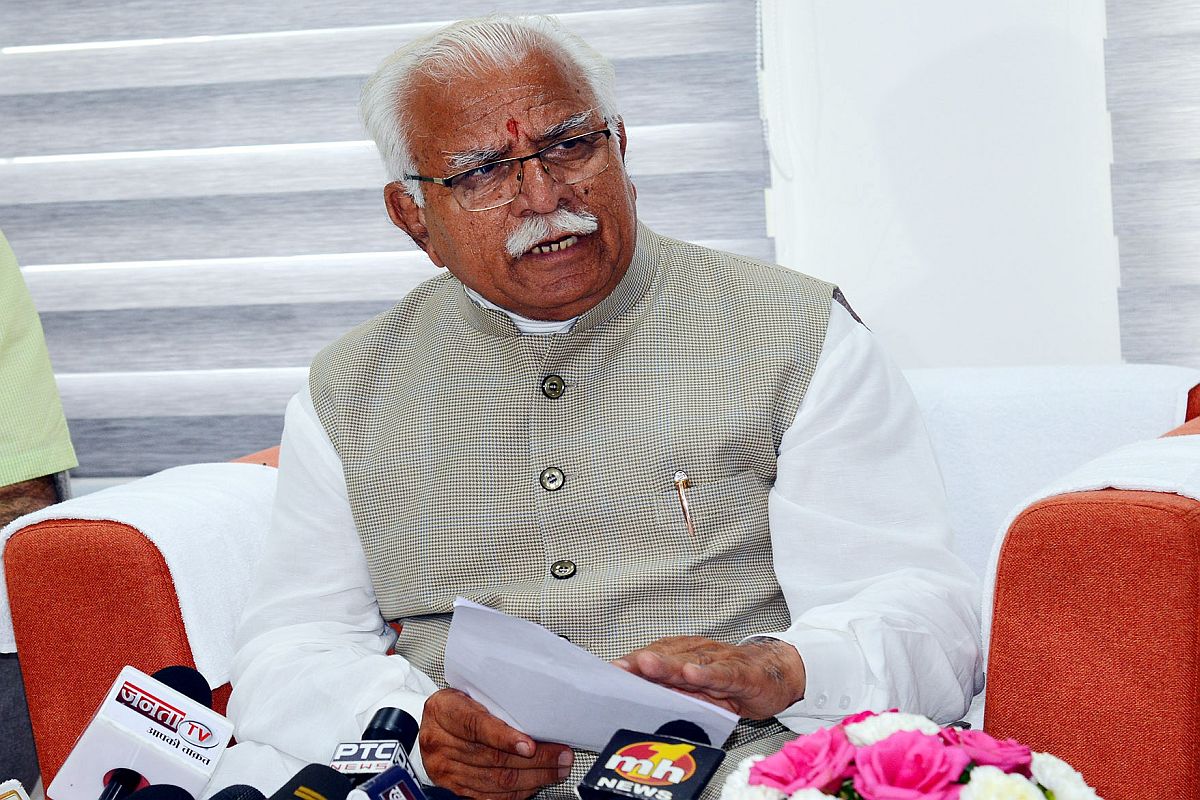‘No alliance with AAP in Delhi’
Delhi Pradesh Congress Committee (DPCC) chief Devender Yadav is counted as one of the prominent politicians in the national capital.
As Haryana gears up for its turn to vote during the sixth phase of the Lok Sabha elections on May 25, the political landscape is more uncertain than ever.

Haryana Chief Minister Manohar Lal Khattar (File Photo: IANS)
As Haryana gears up for its turn to vote during the sixth phase of the Lok Sabha elections on May 25, the political landscape is more uncertain than ever. The state, with its 10 constituencies, is witnessing a turbulent phase marked by shifts in political alliances, caste dynamics, and socio-economic discontent.
The Bharatiya Janata Party (BJP), which secured a landslide victory winning all 10 seats in 2019, faces an uphill battle to retain its dominance amid growing challenges. The BJP’s success in the previous election was buoyed by a wave of nationalist fervour following the Pulwama attack and subsequent Balakot airstrikes. However, factors that once played in their favour seem less potent today. Haryana has seen significant political reshuffling, most notably the replacement of Manohar Lal Khattar with Nayab Saini as Chief Minister and the dissolution of the BJP-JJP alliance. These changes reflect deeper uncertainties within the state’s political fabric. A crucial element in this election is the caste dynamics, particularly the mobilisation of the Jat community.
Jats, who constitute around 24 per cent of Haryana’s electorate, traditionally influence the state’s political outcomes. Historically inclined towards the BJP, the community has shown signs of shifting allegiance, largely due to dissatisfaction with the farm laws and the Agniveer recruitment scheme. The discontent among Jats is further compounded by the recent protests led by farmers and women wrestlers, who have found a sympathetic ear in Congress leader Bhupender Hooda. The BJP is now trying to consolidate support among non-Jat communities, such as Brahmins, Yadavs, Baniyas, and Punjabis. By appointing Mr Saini, an OBC leader, as Chief Minister, the BJP hopes to secure backing from other backward classes. This strategy indicates the party’s recognition of the need to broaden its appeal amid waning support from Jats. Both the BJP and Congress have significantly overhauled their candidate lists, reflecting the evolving electoral calculus.
Advertisement
The BJP has replaced six of its MPs, and Congress has introduced new faces for eight of the nine seats it is contesting. This highlights both parties’ attempts to address changing voter sentiments and regional dynamics. Key contests in Rohtak, Hisar, and Sirsa will serve as bellwethers for the state’s political future. In Rohtak, the battle between Deepender Hooda of Congress and BJP’s Arvind Sharma is a crucial test of the Hooda family’s influence.
Hisar presents a fascinating scenario with three members of the Chautala clan vying for dominance from different parties, making it a microcosm of Haryana’s complex political rivalries. Sirsa, with former Congress leader Ashok Tanwar now representing the BJP against Kumari Selja of Congress, underscores the shifting allegiances and intra-party challenges within the SC community. As voters head to the polls, the interplay of caste dynamics, leadership changes, and socio-economic issues will shape the state’s future. The BJP’s ability to navigate these complexities and the Congress’s efforts to reclaim lost ground will determine the verdict
Advertisement